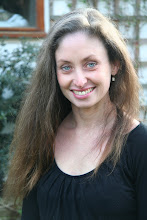It’s probably better to concentrate on what you can see inside the Fort rather than look around outside. It’s very much the best house on the street. Rajiv was able to tell us everything about everything. There was nothing relating to Agra and its Mughal empire he did not know, apart from how to impart this information in a manner that could keep his audience engaged!

Then it was time to climb into the minibus again and drive to Fatehpur Sikri. Fatehpur Sikri is a ghost town, 40 kilometres from Agra, and I think, much more interesting than Agra Fort. The Mughal emperor Akhbar oversaw building the city, 60 years before the first stones were laid on the Taj Mahal. Akhbar wanted to create a new capital because he was weary with the crowds at Agra. I know how he felt! Fatehpur Sikri was only in use for 16 years, and then it was abandoned. There are various reasons suggested for this. Maybe water had been in short supply, maybe it was more militarily useful to be back in Agra. Maybe Akhbar found the road journey between the two rather tiresome. I know we did! We could have spent more time wandering around Fatehpur Sikri, as it seemed to have been abandoned by tourists as well as Akhbar, but we had to get back in the minibus and back on the road to Agra to catch our train home.

The journey began well. However it was not long before we found ourselves at the end of a queue of motorbikes, cars, buses and trucks. This was a single lane road, with a dirt verge. This dirt verge became another lane of traffic. Vehicles began overtaking us on the other side of the road, so many vehicles that it became another lane of traffic heading into Agra. Vehicles began overtaking this lane of traffic on the dirt verge on the other side of the road. I don’t know what these vehicles thought they were ever going to achieve. It seemed obvious to me that at some point there would be to be four lanes of cars travelling north on a single lane road pointing directly at four lanes of cars travelling south on the other side of the same single lane road. And knowing India, both sides would feel they had right of way, regardless of which side of the road they were on. After 30 minutes of going absolutely nowhere, Rajiv turned around from his seat alongside the driver and told us we would be moving to Plan B. This was a good thing, because while we were not yet behind schedule for the train, we were beginning to think dinner would be out of the question. Rajiv said there was another road we could take, one that not many people knew about. He had taken the British Labour politician Barbara Castle down this road when she too needed to get to Agra Train station. So we turned the minibus around, a feat requiring quite a bit of skill from our driver as all four lanes of this single lane road already had stationary vehicles on them. Behind us the traffic was lighter, so after a while we were able to rejoin the tarmac and drive on the correct side of the road. You might think it would feel good to be travelling on the correct side of the road, actually moving past many, many stationary vehicles. Except some of the drivers of those vehicles had not yet worked out that there was no way anyone was going anywhere ahead. We saw headlights approaching. A bus was driving straight at us. He made no attempt to pull over. Where could he go? There were already two full lanes of traffic on the correct side of the single lane road. He should give way to us, for we were on the side of the road allocated to us by street designers. But he was bigger than we were, and in India, the accepted rule is the bigger vehicle takes precedence. Thankfully the other bus driver slowed down, and there we were, two vehicles pointing directly at each other on the same side of the road. Our driver drove back on to the dirt verge and we continued back towards Baroness Castle of Blackburn’s Plan B.
When we reached Barbara’s road it became apparent pretty quickly that calling it a road was probably not entirely accurate. I don’t know when Barbara Castle was in India, but she left public office in 1989. This dirt track probably hadn’t seen any maintenance since then. So we bounced along , being very grateful that Holly had her car seat, and that the bus actually had enough working seatbelts to strap her in. This track between fields led to a village, and after a while, back to the road between Agra and Fatehpur Sikri. The traffic on this side of the jam was no better than it had been before the dirt track, but it was all heading up towards Fatehpur Sikri, and as we weren’t going that way, we didn’t care! We finally reached Agra railway station, dinnerless but with 20 minutes to spare. As we'd rather go without dinner than spend another day in Agra ,it was a result!



No comments:
Post a Comment